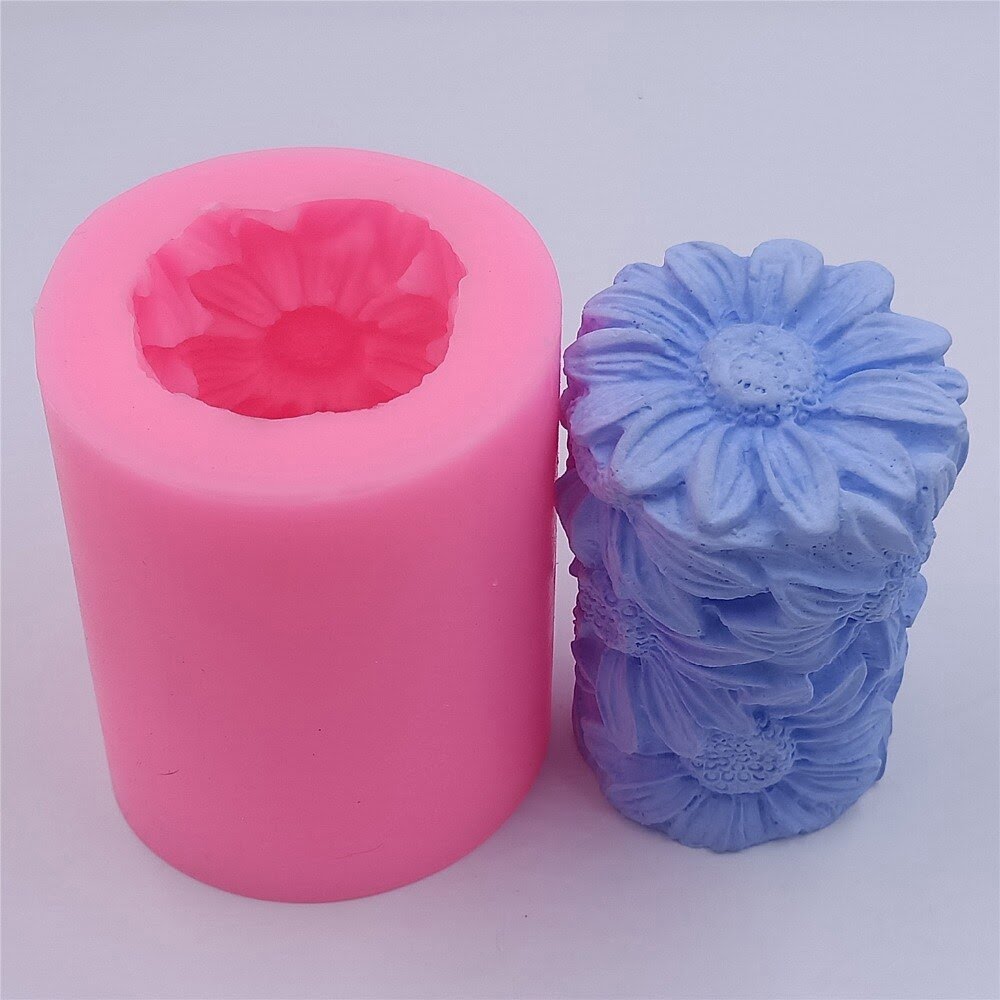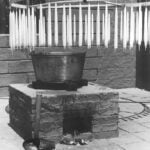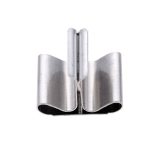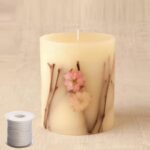Candle making is an art that involves a multitude of factors, from selecting the perfect fragrance to achieving the desired aesthetic appeal. However, one often overlooked aspect is the size of the wick used in the candle.
The right wick size plays a crucial role in ensuring an even burn, optimal flame height, and prolonged burn time. In this article, we will delve into the topic of what size wick for candle making and explore its significance in creating beautifully crafted candles.
When it comes to candle making, understanding the basics of wick size is essential. There are various factors to consider, such as the type of wax used, candle diameter, desired burn time, and flame height. Each of these elements can greatly influence the overall performance and quality of your candle. By taking these factors into account when selecting a wick size, you can achieve a perfect balance between aesthetics and functionality.
Choosing the right type of wick for your specific candle can be overwhelming given the vast array of options available. That’s why we’ve put together a comprehensive guide to help you navigate through various types of wicks and make an informed decision based on your needs and preferences. From flat braided wicks to cored wicks, we will explore their characteristics and guide you in identifying which one suits your candle-making project best.
In the next section, we will discuss how exactly wick size affects burn time and flame height – two critical aspects that determine how well your candle performs when lit. Finding this delicate equilibrium requires careful consideration to ensure that your candles not only burn efficiently but also provide a captivating ambiance. So stay tuned as we walk you through this fascinating process in detail.
The Basics of Wick Size
When it comes to candle making, selecting the right wick size is crucial for achieving optimal burn performance and safety. The size of the wick plays a significant role in determining how your candle will burn, including factors such as burn time and flame height. Understanding the basics of wick size and the different factors to consider can help you create candles that are not only aesthetically pleasing but also burn efficiently.
Factors Influencing Wick Size
Several factors come into play when determining the appropriate wick size for your candle. One important factor is the diameter of your candle vessel or mold. The larger the diameter, the thicker and longer-wicked your candle should be to ensure proper burning. Additionally, considerations like fragrance load, wax type, color additives, and even air circulation in your environment can impact the selection of wick size.
Wax Type and Viscosity
The type of wax you use is another critical aspect to consider when choosing a wick size. Different types of wax have varying viscosity levels, which can affect how well the wax flows up through the wick to be burned. Soy wax, for example, has a lower density than paraffin wax, meaning that it requires a larger-sized wick to pull up an ample amount of melted wax for efficient burning.
Desired Burn Time and Flame Height
Determining your desired burn time and flame height is one of the essential considerations when selecting a wick size. If you prefer longer burning times or higher flames for decorative purposes, you may need to choose a larger-sized wick. On the other hand, if you want shorter burn times or lower flames for more practical reasons like safety or prolonged scent release in scented candles, opting for a smaller-sized wick would be more appropriate.
By understanding these factors influencing wick size selection in candle making, you can make informed decisions that lead to well-designed and efficiently burning candles. The next section will delve into the various types of wicks available in the market and provide a comprehensive guide on choosing the right wick for your specific candle-making needs.
Types of Wicks
When it comes to candle making, choosing the right wick is crucial in ensuring a successful and well-performing candle. There are various types of wicks available, each designed for different types of candles and specific purposes. Understanding the different types of wicks and their characteristics can help you make an informed decision when selecting the perfect wick for your candle.
- Cotton Wicks: Cotton wicks are the most common type of wick used in candle making. They are known for their reliability and versatility, making them suitable for a wide range of candles. Cotton wicks come in different sizes, from small to large, allowing you to find the perfect size for your candle’s diameter.
- Wood Wicks: If you’re looking to add a unique touch to your candles, wood wicks are worth considering. These wicks are made from natural wood and create a distinctive crackling sound similar to that of a fireplace when lit. Wood wicks are typically larger in size and provide a wider flame pool, making them ideal for larger container candles.
- Zinc-Core Wicks: Zinc-core wicks are specially designed for use in pillar or votive candles where rigidity is required to support the weight of the wax. These wicks have a zinc core that allows them to maintain stability during burning, preventing flopping or falling over.
- HTP Wicks: High-temperature paper (HTP) wicks are recommended for containers with high fragrance loads or wax blends that require higher heat resistance. These wicks work well with soy-based and vegetable-based wax blends and help prevent excessive mushrooming or smoking.
When choosing the right type of wick, consider factors such as the type of wax you’re using, diameter of your candle, desired burn time, fragrance load, and any additives you may be incorporating into your candles. Experimenting with different types of wicks will help you achieve optimal burn performance and ensure the best results for your candles.
How Wick Size Impacts Burn Time and Flame Height
When it comes to candle making, finding the perfect balance between burn time and flame height is essential. The size of the wick plays a crucial role in achieving this delicate balance. Understanding how wick size impacts burn time and flame height is essential for creating candles that not only look beautiful but also burn efficiently.
The size of the wick directly affects the amount of fuel (wax) being drawn up through the wick to sustain the flame. A larger wick will draw more fuel, resulting in a bigger flame and faster burn time. On the other hand, a smaller wick will draw less fuel, resulting in a smaller flame and longer burn time.
To achieve the perfect balance, it’s important to consider several factors when selecting the appropriate wick size for your candle. These factors include the diameter of your candle, the type of wax you’re using, any additives or fragrances included in the candle, and even the environment in which your candle will be burned. Each factor can impact how your wick burns and finding the right combination will result in optimal burn time and flame height.
To help determine the correct wick size for your candle based on its diameter, you can use a helpful step-by-step process. First, measure the diameter of your container or mold. Then refer to a wick size chart or guide that provides recommendations for specific diameters. These charts are typically available from suppliers or online resources specializing in candle making supplies.
Determining Wick Size Based on Candle Diameter
Determining the right wick size based on the diameter of your candle is crucial to ensure a clean and efficient burn. When the wick is too small, it may not generate enough heat to fully melt the wax, resulting in a tunneling effect where the wax does not evenly melt across the surface. On the other hand, if the wick is too large, it can create excessive smoke and soot, leading to an unpleasant burning experience.
To determine the appropriate wick size for your candle, follow these step-by-step instructions:
- Measure the Diameter: Using a ruler or caliper, measure the diameter of your container or pillar candle at its widest point. This measurement will be used as a starting point to choose an initial wick size.
- Consult a Wick Size Chart: Many candle supply companies provide wick size charts that suggest recommended wick sizes based on different diameter ranges. These charts serve as a helpful guide and should be consulted during the decision-making process.
- Consider Wax Type and Fragrance Load: Different types of wax and fragrances have varying burn characteristics. For example, soy wax tends to require larger wicks compared to paraffin or beeswax. Likewise, highly-scented candles may need larger wicks due to increased fragrance load. Take these factors into account when selecting a wick size.
- Perform Test Burns: Once you have selected a potential wick size based on the chart recommendations and other factors, it’s important to conduct test burns. This involves making a sample candle with the chosen wick size and observing its burn characteristics over several hours of burning time. Look for signs such as even melting across the surface, minimal smoke and soot, and a flame that does not flicker excessively.
By following these step-by-step instructions and using resources like charts and test burns, you can determine the optimal wick size for your candle’s diameter with precision. It may require some trial and error, but finding the perfect balance between wick size and candle diameter will result in a beautifully burning candle that you can enjoy for hours on end.
| Candle Diameter (inches) | Recommended Wick Size |
|---|---|
| 1-2 | Small or Extra Small |
| 2-3 | Small or Medium |
| 3-4 | Medium or Large |
| Above 4 | Large or Extra Large |
Ensuring Safe and Efficient Burning
One crucial aspect of candle making that often goes overlooked is the relationship between wick size and wax type. Selecting the right wick size for your particular wax can have a significant impact on the safety and efficiency of your candles. Different types of wax have different melting points, densities, and burn characteristics, which must be taken into consideration when choosing a wick.
Firstly, it’s important to understand that different waxes require different heat levels to achieve optimal burning. For example, soy wax typically has a lower melting point than paraffin wax. Therefore, if you use too large of a wick in soy candles, it may burn too quickly and create a larger flame than desired. On the other hand, using too small of a wick in paraffin candles may cause incomplete combustion and tunneling.
Another factor to consider is the density of the wax. Some waxes are denser than others, meaning they require more heat or airflow to burn efficiently. If you’re working with a dense wax like beeswax or palm wax, you may need to use a larger wick size to ensure proper oxygen flow and prevent drowning of the flame.
Additionally, certain waxes contain additives or fragrances that can influence their burn characteristics. These added substances can affect how evenly the candle burns and how much soot is produced. It’s essential to experiment with different wick sizes when using scented or colored waxes to find the perfect balance between fragrance throw and clean burning.
Troubleshooting Wick Issues
Common Wick Issues
When creating candles, it is not uncommon to encounter challenges with the wick. Understanding common wick issues can help you troubleshoot and resolve them effectively. Here are some of the most common problems that candle makers face:
: One prevalent issue is when the tip of the wick forms a mushroom-like shape while burning
: Tunneling occurs when only a small portion of the wax pool melts while burning
: Some candle makers may experience issues with scent throw
Solutions for Wick Issues
Fortunately, there are solutions to these common wick problems in candle making:
- Adjusting Wick Size: If you encounter mushrooming or poor scent throw, it may be necessary to experiment with different sizes of wicks until you find one that suits your specific candle and fragrance combination. You can try using a smaller or larger wick to achieve optimal performance.
- Trimming the Wick: Regularly trimming your candle’s wick to about 1/4 inch before each burn can help prevent mushrooming and maintain an even flame height. This practice will also help avoid excessive soot and smoke.
- Testing and Monitoring: Prior to mass production, it is crucial to test your candle with different wick sizes and monitor their performance. This way, you can identify any potential issues early on and make adjustments accordingly.
- Considering Wick Type: Different types of wicks perform differently depending on the wax type and candle design. Cotton wicks are a popular choice for most candles, but you may need to explore other options like braided or wooden wicks for specific projects.
By identifying common wick problems and implementing these solutions, you can troubleshoot issues effectively and create high-quality candles that burn cleanly and evenly while providing optimal scent throw. Taking the time to understand and address these challenges will greatly enhance your candle making experience.
Exploring Wick Recommendations for Different Candle Types
Pillar candles, container candles, and votive candles each have unique characteristics that require specific wick recommendations to ensure optimal performance. Choosing the right wick size for these different candle types is crucial in achieving a clean burn, even melting, and desirable flame characteristics.
For pillar candles, which are typically wider and taller than other candle types, it is important to select a wick that can generate enough heat to melt the wax evenly across the diameter of the candle. This will prevent tunneling and ensure a long-lasting burn. Generally, thicker wicks are recommended for pillar candles as they provide more heat output.
However, it is also essential to consider the type of wax being used and any additives or fragrance oils present in the candle. These factors may affect how the wick performs and may require adjustments in size.
Container candles, on the other hand, are placed inside a vessel or container made of glass or other materials. The container provides insulation and traps heat, which means that container candles generally require smaller wick sizes compared to pillar candles.
Selecting too large of a wick for a container candle can result in excessive heat that leads to uneven burning or even cracking of the container. It is important to consider both the diameter of the container and its height when choosing a suitable wick size.
Votive candles are smaller-sized candles intended to burn for shorter periods of time, often used during special occasions or religious rituals. Due to their petite size, votive candles usually require small wick sizes that produce an appropriate flame height without excessive dripping or smoking. It is recommended to choose pre-tabbed wicks specifically designed for votive candles as they provide consistent performance and ease of use.
When selecting wicks for each type of candle, it is crucial to refer to manufacturer guidelines and perform test burns before mass production. By experimenting with different wick sizes and closely monitoring their performance during test burns, candle makers can fine-tune their choices to achieve the desired burn time, flame height, and overall candle performance.
| Candle Type | Recommended Wick Size |
|---|---|
| Pillar Candles | Thicker wicks that generate more heat output |
| Container Candles | Smaller wicks to accommodate the insulation provided by containers |
| Votive Candles | Pre-tabbed wicks specifically designed for votive candles |
Advanced Wick Sizing Techniques
When it comes to candle making, selecting the right wick size goes beyond just considering the diameter of the candle. Advanced candle makers understand that other factors, such as fragrance and additives, can also impact the performance of the wick. In this section, we will explore the importance of understanding the impact of fragrance and additives on wick sizing.
One factor to consider when choosing a wick for scented candles is the type and strength of fragrance oil being used. Fragrance oils come in various strengths, and each one can have a different impact on how a candle burns.
Stronger fragrances may require a larger wick size to ensure that enough heat is produced to disperse the scent effectively throughout a room. Conversely, if a fragrance is lighter or has a lower flashpoint, a smaller wick may be necessary to prevent an overpowering or uneven burn.
Another consideration when working with fragrances is their composition. Some fragrance oils contain additives that can affect the performance of your candles. For example, vanilla-based fragrances are known to cause issues such as browning or carbon buildup on wicks.
It is important to test different wick sizes when using these types of fragrances and observe how they interact with your chosen wax and additives. This experimentation will help you find the optimal balance for achieving both a pleasing scent throw and good burn performance.
In addition to fragrances, other candle additives such as colorants or botanicals can also impact wick performance. For example, adding certain botanicals like dried flowers or herbs can create beautiful visual effects in your candles but may result in clogged or smoldering wicks if not properly accounted for during wick selection. When incorporating additives into your candles, it’s crucial to conduct thorough testing with different wick sizes to ensure proper burning and safety.
Understanding how fragrance oils and additives influence wick sizing allows advanced candle makers to craft high-quality candles that burn efficiently while providing a delightful sensory experience. By considering the type and strength of fragrances, as well as any additives used, candle makers can confidently select the appropriate wick size that achieves optimal burn performance and scent diffusion.
Conclusion
In conclusion, selecting the right wick size is a crucial step in candle making. It is essential to understand the various factors that contribute to the choice of wick size, such as candle diameter, wax type, fragrance, and additives. By considering these factors and following step-by-step instructions, you can achieve safe and efficient burning, as well as desired burn time and flame height.
The importance of wick size cannot be overstated when it comes to creating perfectly crafted candles. Using a wick that is too large or too small can lead to various issues like uneven melting, excessive smoking, or a weak flame. However, by applying the knowledge gained from this comprehensive guide on choosing the right wick size, you can troubleshoot these problems effectively.
Furthermore, it is worth mentioning that different types of candles require specific wick recommendations. Whether you are making pillar candles, container candles, or votive candles, there are suitable wicks available for each type. Consider the characteristics of your specific candle type and follow expert suggestions to ensure optimal burning performance.
Ultimately, mastering the art of wick selection requires practice and experimentation. As you gain experience in candle making and become more familiar with different factors that influence wick size choices, you will have greater confidence in creating beautifully crafted candles. Remember to always prioritize safety and follow proper guidelines throughout the process. With patience and dedication, you can achieve consistent results and enjoy the satisfaction of producing high-quality candles with perfectly sized wicks.
Frequently Asked Questions
How do I know what size candle wick to use?
When determining the appropriate size of a candle wick, several factors need to be considered. The general rule is that the diameter of the candle should guide your selection. A larger candle will require a bigger wick, while a smaller one will necessitate a smaller wick.
It’s crucial to strike a balance so that the wick provides an even and efficient burn throughout the entire candle. Experimentation may be necessary with different wick sizes to achieve optimal results, taking into account variables such as desired fragrance load, wax type, and container size.
Can a wick be too big for a candle?
Yes, using a wick that is too big for a candle can have negative consequences. If the wick is oversized, it will generate excessive heat and flame height that surpasses what is ideal for the particular candle size.
This can result in an unstable burn, increased soot production, rapid consumption of wax, uneven melting patterns, and potentially unsafe conditions like glass cracking or excessive smoke emission. It’s essential to match the size of the wick precisely to ensure safe and efficient performance.
What is the best wick to use when making candles?
Selecting the best wick for making candles depends on various factors including wax type, container size and shape, desired fragrance load, and personal preference for flame appearance (e.g., flickering or steady). Cotton-cored wicks are commonly recommended due to their clean burn with minimal soot emission. They come in different types such as square-braided or flat-braided depending on specific needs.
It’s vital to consider characteristics like burn rate (how quickly it consumes wax), self-trimming properties (reducing maintenance requirements), and compatibility with your specific candle-making materials when choosing the best wick for your candles. Trial-and-error may be necessary before finding the ideal fit for your unique candle-making process.

Welcome to my candle making blog! In this blog, I will be sharing my tips and tricks for making candles. I will also be sharing some of my favorite recipes.





